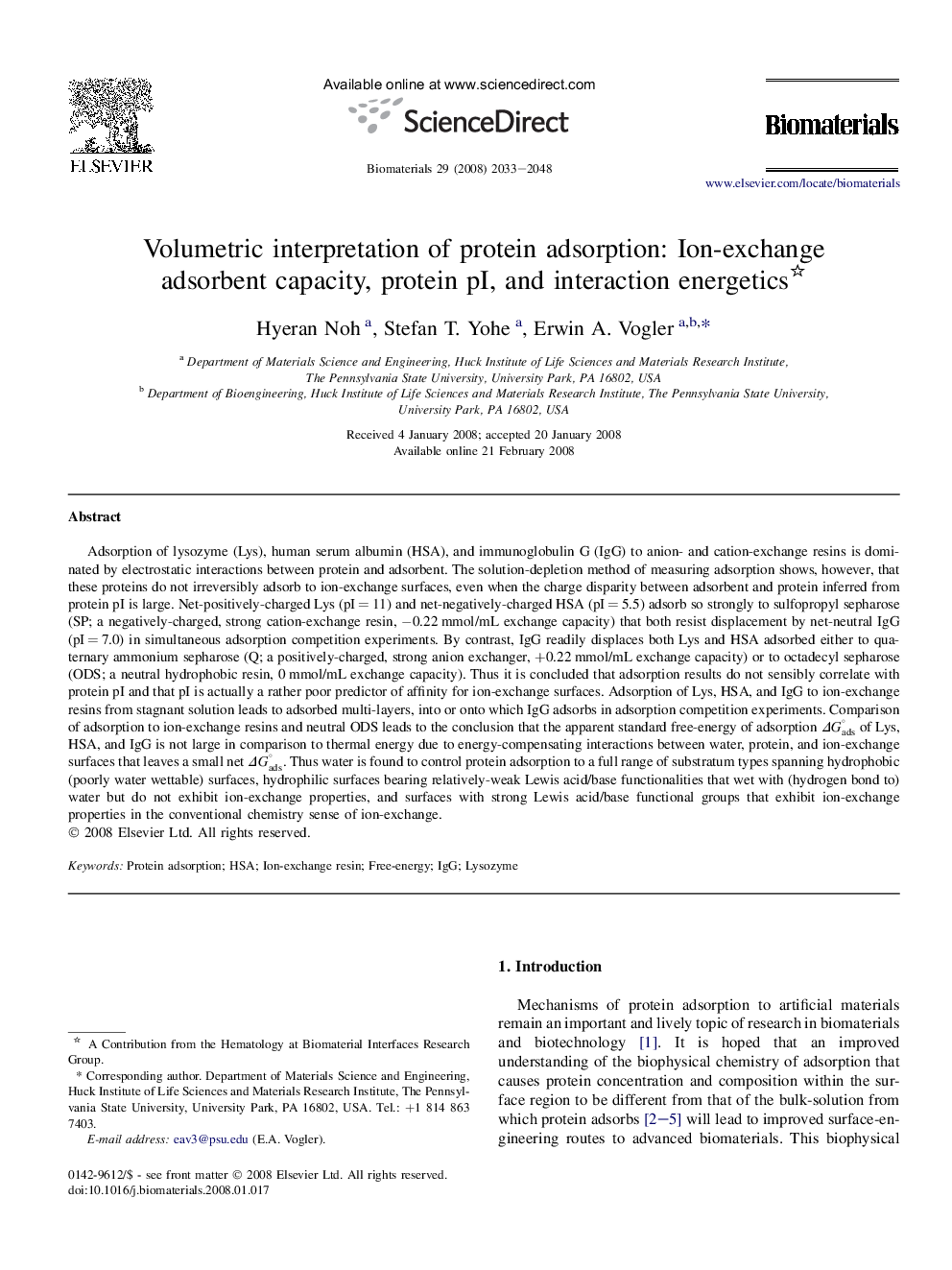| کد مقاله | کد نشریه | سال انتشار | مقاله انگلیسی | نسخه تمام متن |
|---|---|---|---|---|
| 10488 | 687 | 2008 | 16 صفحه PDF | دانلود رایگان |

Adsorption of lysozyme (Lys), human serum albumin (HSA), and immunoglobulin G (IgG) to anion- and cation-exchange resins is dominated by electrostatic interactions between protein and adsorbent. The solution-depletion method of measuring adsorption shows, however, that these proteins do not irreversibly adsorb to ion-exchange surfaces, even when the charge disparity between adsorbent and protein inferred from protein pI is large. Net-positively-charged Lys (pI = 11) and net-negatively-charged HSA (pI = 5.5) adsorb so strongly to sulfopropyl sepharose (SP; a negatively-charged, strong cation-exchange resin, −0.22 mmol/mL exchange capacity) that both resist displacement by net-neutral IgG (pI = 7.0) in simultaneous adsorption competition experiments. By contrast, IgG readily displaces both Lys and HSA adsorbed either to quaternary ammonium sepharose (Q; a positively-charged, strong anion exchanger, +0.22 mmol/mL exchange capacity) or to octadecyl sepharose (ODS; a neutral hydrophobic resin, 0 mmol/mL exchange capacity). Thus it is concluded that adsorption results do not sensibly correlate with protein pI and that pI is actually a rather poor predictor of affinity for ion-exchange surfaces. Adsorption of Lys, HSA, and IgG to ion-exchange resins from stagnant solution leads to adsorbed multi-layers, into or onto which IgG adsorbs in adsorption competition experiments. Comparison of adsorption to ion-exchange resins and neutral ODS leads to the conclusion that the apparent standard free-energy of adsorption ΔGads° of Lys, HSA, and IgG is not large in comparison to thermal energy due to energy-compensating interactions between water, protein, and ion-exchange surfaces that leaves a small net ΔGads°. Thus water is found to control protein adsorption to a full range of substratum types spanning hydrophobic (poorly water wettable) surfaces, hydrophilic surfaces bearing relatively-weak Lewis acid/base functionalities that wet with (hydrogen bond to) water but do not exhibit ion-exchange properties, and surfaces with strong Lewis acid/base functional groups that exhibit ion-exchange properties in the conventional chemistry sense of ion-exchange.
Journal: Biomaterials - Volume 29, Issue 13, May 2008, Pages 2033–2048